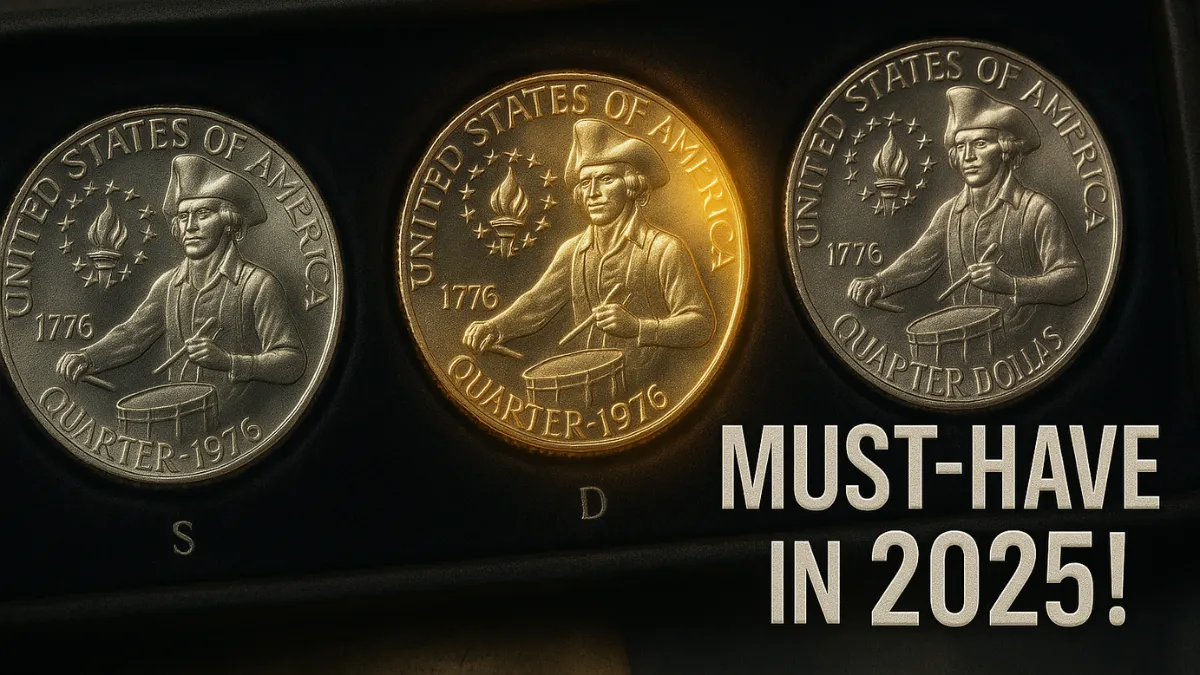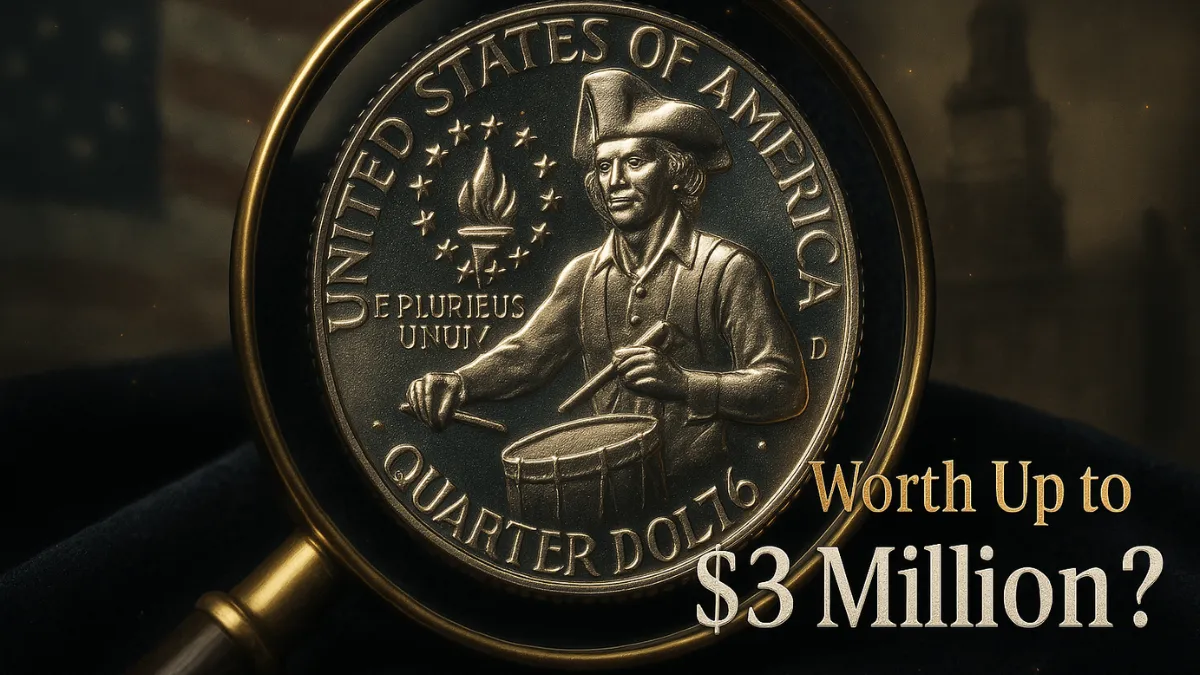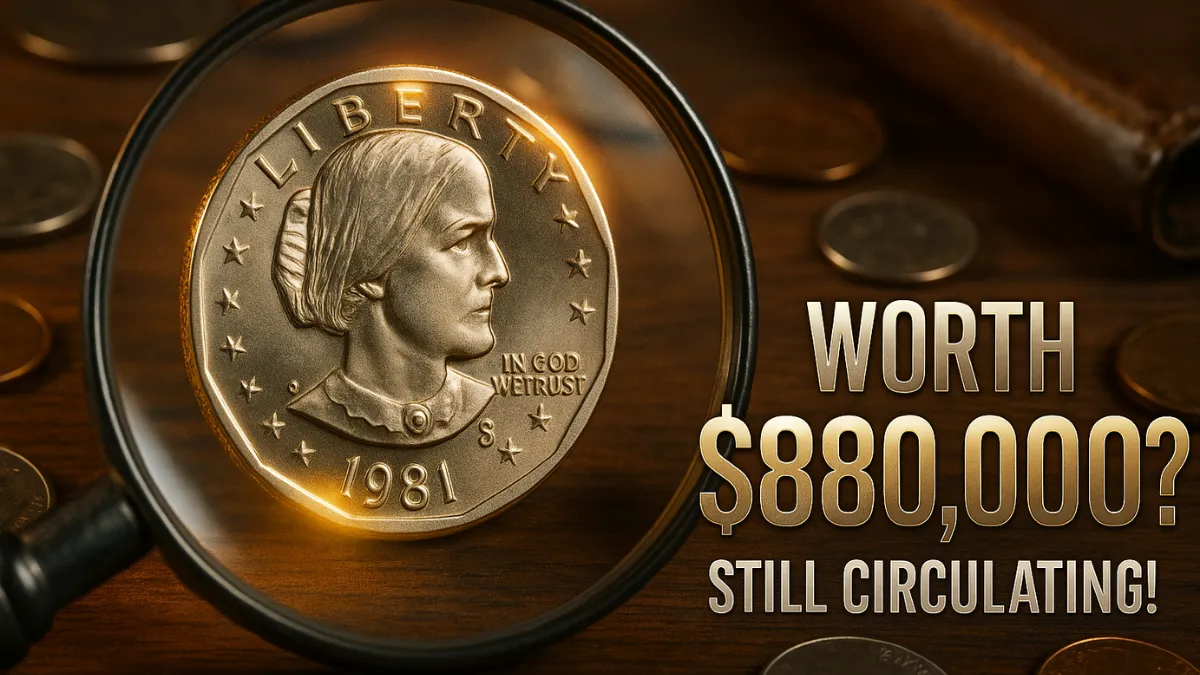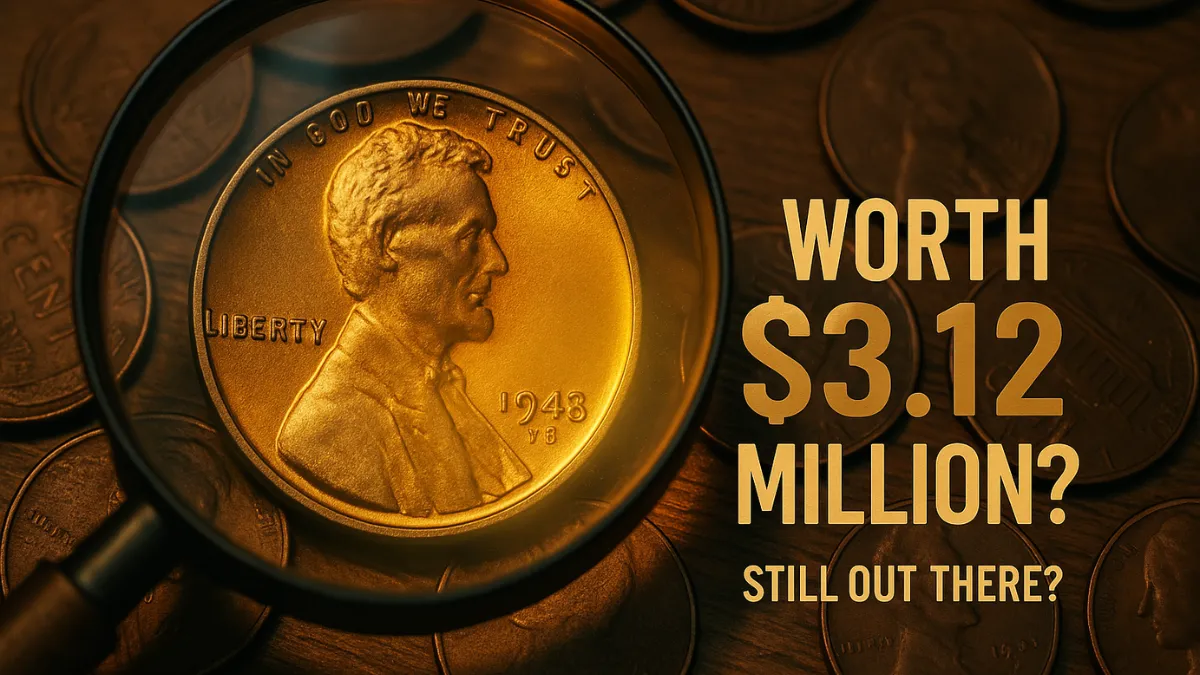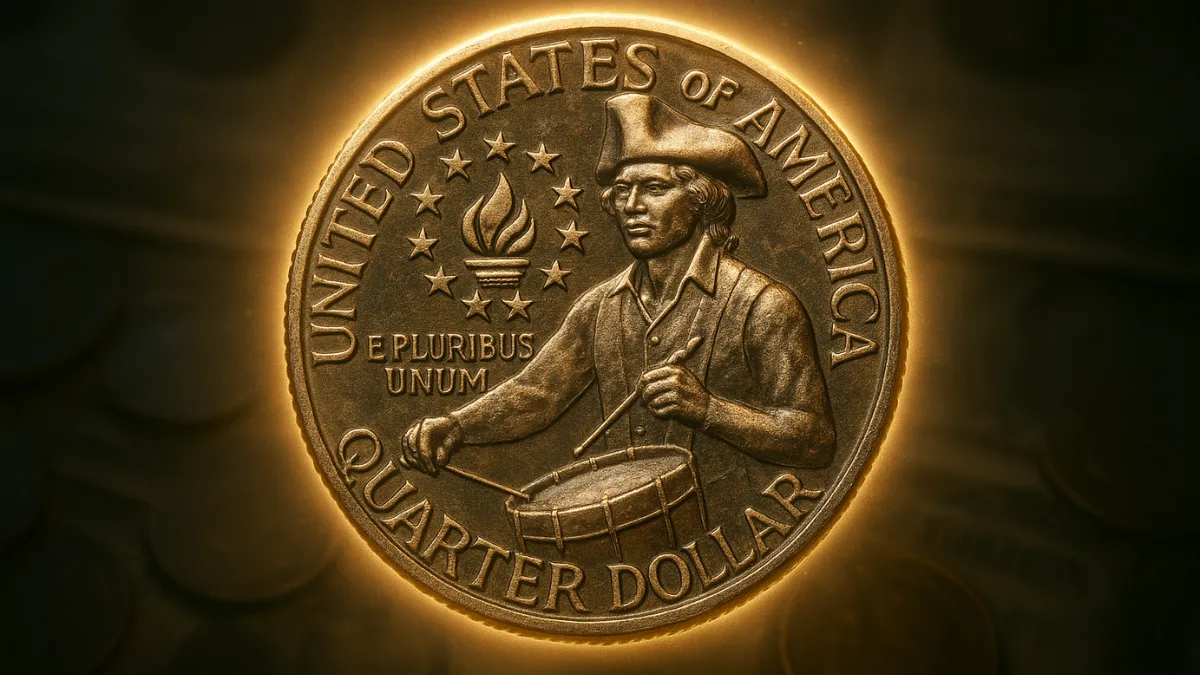The 1976 Bicentennial Quarters, minted to commemorate the 200th anniversary of American independence, have become iconic pieces cherished by both collectors and history buffs.
Adorned with a distinctive colonial drummer design on the reverse and marked with the dual date “1776–1976” on the obverse, these quarters were issued in vast numbers—over 1.6 billion coins came from the Philadelphia and Denver mints.
Although the majority of these quarters remain worth just 25 cents, a rare handful featuring minting errors or unusual traits have surged in value, capturing serious attention from the numismatic community.
In this article, we’ll explore three extraordinary 1976 Bicentennial Quarters that have ignited excitement among collectors and casual coin enthusiasts alike, fueling a renewed nationwide search for these potentially priceless treasures.
Why the 1976 Bicentennial Quarter Is So Special
The 1976 Bicentennial Quarter was made to celebrate 200 years of American independence. It was different from the usual Washington quarters, which had an eagle on the back. Instead, this special coin showed a colonial drummer, a design created by Jack L. Ahr, who won a national competition.
On the front, it featured the dual dates “1776–1976,” showing the years from the signing of the Declaration of Independence to the bicentennial year. Most of these coins were made with a copper-nickel mix, but a smaller number were created in 40% silver at the San Francisco Mint for collector sets. As 2026, the 250th anniversary of the U.S., gets closer, more people are paying attention to these quarters. Social media sites like X are full of people sharing stories of finding valuable ones in places like their change jars or even soda machines.
Because of their history, rare errors, and rising market prices, these quarters have become a favorite topic among coin fans.
The Top Three Must-Have 1976 Bicentennial Quarters
Some 1976 Bicentennial Quarters are worth way more than face value due to rare errors, silver content, or perfect condition. Collectors are especially excited about three unique versions of the coin. These include the silver proof quarter with the “S” mint mark, the double die obverse quarter from Denver, and the rare no-mint-mark silver proof version.
Each one stands out for its rarity, look, and high auction sales. These coins have become top targets for collectors in 2025. Below, we’ll look at what makes each coin so special, how much they’re worth, and what to look for if you want to find one in your collection or change.
1. The 1976-S Silver Proof Quarter (PR70 Deep Cameo)
Why It’s Valuable
The 1976-S Silver Proof Quarter is a favorite among collectors thanks to its shiny finish and silver content. Made at the San Francisco Mint, this quarter was part of a special collection and contains 40% silver. What makes it even more valuable is the condition—coins graded PR70 Deep Cameo are flawless and very hard to find.
The Deep Cameo grade means the coin has a frosted image with a mirror-like background, giving it a striking look. With only a small number of these proof coins staying in perfect shape, collectors are always eager to get their hands on one. The limited silver mintage also adds to the rarity and demand for these coins.
Market Value and Notable Sales
One of these silver proof quarters, graded PR70 Deep Cameo, sold for $19,200 at auction in early 2025. That sale shows just how valuable these coins can be if they’re in perfect condition. Most of the 1.6 billion bicentennial quarters made were copper-nickel, but only around 15 million were silver proofs.
That difference makes silver versions much harder to find. As more people hunt for rare coins, prices for top-grade proofs like these could go even higher in the future.
How to Spot It
To find one of these silver proof quarters, check under George Washington’s head for the “S” mint mark. The coin should feel slightly heavier—about 6.25 grams—because of its silver content. Also, look for a shiny, mirror-like surface with very sharp details. These features show that the coin is a proof and not a regular circulation quarter.
2. The 1976-D Double Die Obverse (DDO) Quarter
Why It’s Valuable
The 1976-D Bicentennial Quarter with a Double Die Obverse (DDO) is one of the rarest and most exciting errors to find. This type of mistake happens when the die used to stamp the coin shifts slightly, making some parts of the design appear doubled.
You’ll usually see this doubling on words like “LIBERTY” or “IN GOD WE TRUST,” or even on the date. The DDO error is rare, and that makes it very popular with collectors. Finding this kind of mistake in everyday change is not common, which is why these coins are worth so much when discovered.
Market Value and Notable Sales
A 1976-D quarter with a double die error sold for $12,000 in early 2025, showing just how much collectors are willing to pay for one. The mix of a rare mint error and the historical background of the coin makes it very desirable. There have even been stories of these coins being found in everyday places like bank rolls or gas station change. That has sparked a rush among hobbyists and casual collectors who hope to find one for themselves.
How to Spot It
To spot a DDO error, use a magnifying glass and look closely at the words “LIBERTY,” “IN GOD WE TRUST,” and the dual date. If the letters or numbers look slightly doubled, you might have something special. Make sure the coin has a “D” mint mark under Washington’s neck, showing it was made in Denver. The better the condition of the coin, the more it could be worth—especially if it’s uncirculated or barely used.
3. The No-Mint-Mark Silver Proof Quarter
Why It’s Valuable
The no-mint-mark silver proof quarter from 1976 is one of the rarest and most mysterious versions out there. It’s believed these coins were mistakenly struck at the San Francisco Mint without the usual “S” mint mark. They were probably supposed to be part of a proof set, but for unknown reasons, a few were released without a mint mark.
Since they also have a shiny, silver appearance, collectors believe these are real silver proof coins that were never meant to be put into regular circulation. Because so few have been found, they are considered a top prize for any coin enthusiast.
Market Value and Notable Sales
One of these rare quarters was sold at a private auction in 2025 for close to $2 million, showing just how valuable it can be. Another was found in a soda machine in Vermont and later valued at over $4.6 million, creating huge excitement in the coin world. Because these coins are so rare, every new discovery creates a lot of buzz. Collectors keep a close watch for these hidden gems, and when one is found, it quickly becomes news among numismatists and collectors on social media.
How to Spot It
Look for the absence of a mint mark under Washington’s head. If the coin is shiny and reflective, it may have a proof finish. Weigh the coin—silver proof quarters weigh about 6.25 grams, while normal ones are lighter. A shiny surface and crisp details can be good signs that you’ve found a rare no-mint-mark silver proof quarter.
Why These Quarters Are Driving a Collecting Frenzy
What’s making these coins so popular in 2025 is the perfect mix of history, rarity, and the dream of finding one in your pocket. People love the idea that something worth thousands or even millions might be hiding in plain sight.
Stories like a barista finding a quarter worth $1.5 billion in a tip jar or someone spotting a rare coin in a soda machine have fueled this new wave of coin collecting. Social media sites like X are packed with posts showing how to spot rare coins—like weighing them or checking for doubled letters.
Local coin groups and libraries are even holding events to teach people how to find these valuable quarters. Ever since the pandemic, more people have turned to hobbies like coin collecting. As the U.S. gets ready to mark its 250th birthday, the Bicentennial Quarter has gained even more attention.
Experts warn to watch out for fake coins—some try to fake rare errors by altering regular quarters. Always have a rare-looking coin checked by a trusted grading company like PCGS or NGC before trying to sell it.
Value Comparison Table
| Quarter Type | Key Features | Estimated Value (2025) | Notable Auction Sale |
|---|---|---|---|
| 1976-S Silver Proof (PR70) | 40% silver, “S” mint mark, shiny finish | $6,000–$19,200 | $19,200 (2025) |
| 1976-D Double Die Obverse (DDO) | Doubled letters on obverse, “D” mint mark | $500–$12,000 | $12,000 (2025) |
| No-Mint-Mark Silver Proof | No mint mark, proof shine, 40% silver | $35,000–$4.61M+ | $4.61M (2025) |
How to Start Your Hunt
Want to find a valuable 1976 Bicentennial Quarter? Start by checking the coins in your wallet, jars, or any old collections you’ve inherited. Visit flea markets, garage sales, or ask friends and family if they have old coins lying around.
A magnifying glass helps you look for doubled letters or tiny mint marks. A digital scale can help you weigh coins—silver ones are heavier. If you think you’ve found a rare one, don’t clean it! That could lower its value. Instead, take it to a trusted coin dealer or get it graded by a professional service like PCGS or NGC.
The Bicentennial Quarter is more than just a coin—it’s a symbol of American history. With versions like the 1976-S Silver Proof, the 1976-D DDO, and the rare no-mint-mark silver proof causing a stir in 2025, this is the perfect time to check your change and maybe find a life-changing treasure.
FAQs
Are all 1976 Bicentennial Quarters valuable?
No, most are still only worth 25 cents. Only the rare ones with silver content, errors, or perfect condition are valuable.
How can I tell if my quarter is silver?
Silver quarters weigh about 6.25 grams, are shinier than regular ones, and may have a smoother edge.
Where can I sell a rare 1976 quarter?
Use trusted coin dealers, auction houses, or eBay—but always get your coin graded by PCGS or NGC first.
What does a “PR70 Deep Cameo” mean?
It means the coin is in perfect proof condition with a frosted image and a mirror-like background—very rare and highly valuable.
